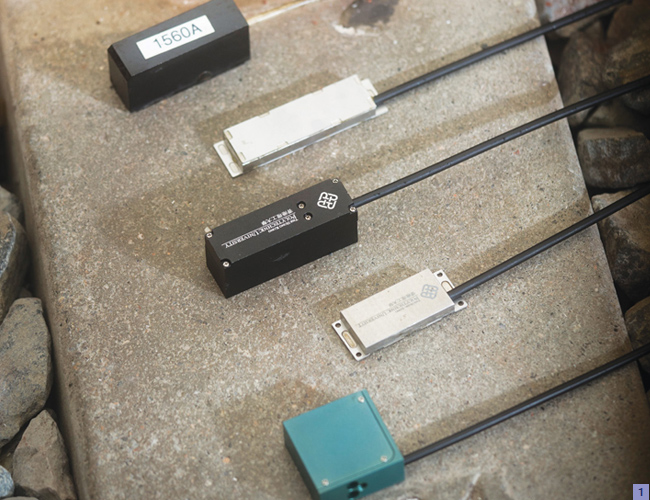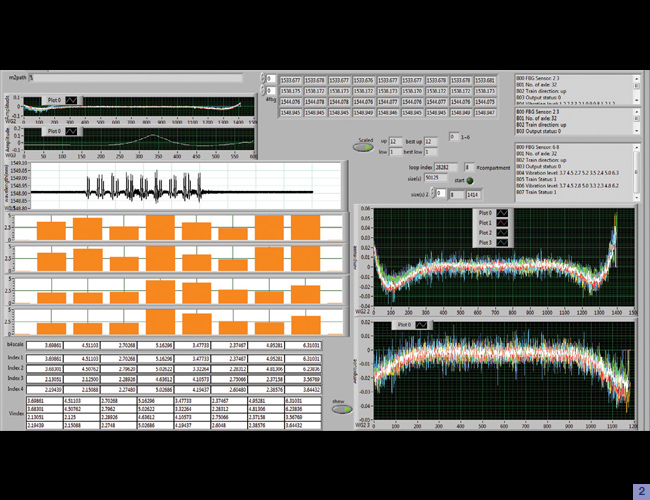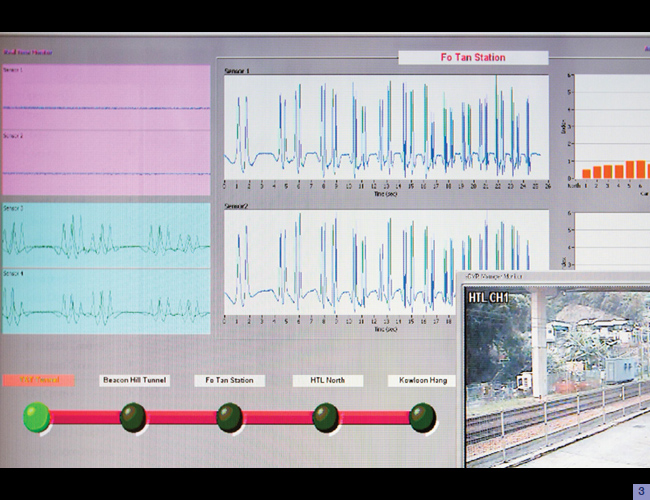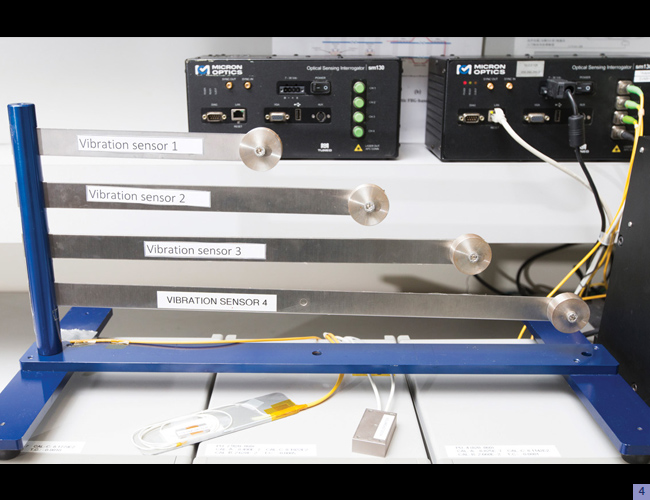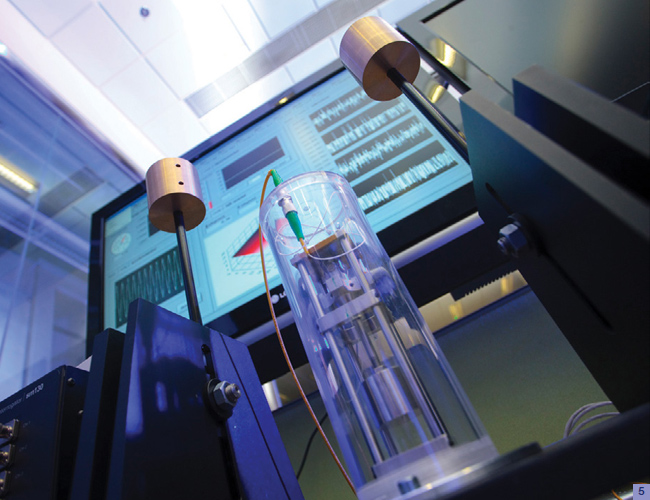
Using light to monitor train conditions
The new type of FBG sensors, which were developed at PolyU’s Specialty Optical Fibre Fabrication Laboratory, are specially constructed to both detect and transmit information about a wide variety of problems. FBGs are built inside a fibre-optic cable, and their design allows them to reflect laser light of certain frequencies back to its origin while letting other frequencies pass. The new sensors take advantage of the fact that any movement in the fibre-optic cable changes the shape of the sensor inside it, which affects the frequency of the reflected light. A computer can then interpret the changes in the light to determine the type and degree of movement in the cable.
The team initially installed their new sensors on tracks at Hong Kong’s railway stations solely to count the number of trains entering and leaving. Vibrations in the rails shake the sensors, deforming them enough to send signals to the monitors. While the FBG sensors worked very well for this job, the researchers soon found more subtle uses for them.
By developing other types of sensors and placing them at different locations around the tracks, as well as in the cars themselves, the team was able to monitor many other aspects of operations. The researchers have now created FBGs that can report on temperature, acceleration, stress, weight and other factors that contribute to a train’s performance.
This technology has many benefits when compared to electronic systems. It is immune to the electromagnetic interference that can affect aboveground electric circuits, as well as lightning, and the signals can be received and understood over distances as far as 100 kilometres. In fact, the sensors themselves are passive and require no power supply. All that is needed is a laser to transmit light and a spectroscope to interpret the returning signals. Moreover, multiple sensors can be integrated into a single length of fibre – hundreds, by the estimation of the research team. The equipment itself is also physically robust. The fibres made of glass are non-flammable and not susceptible to corrosion, which ensure that maintenance costs are low.

